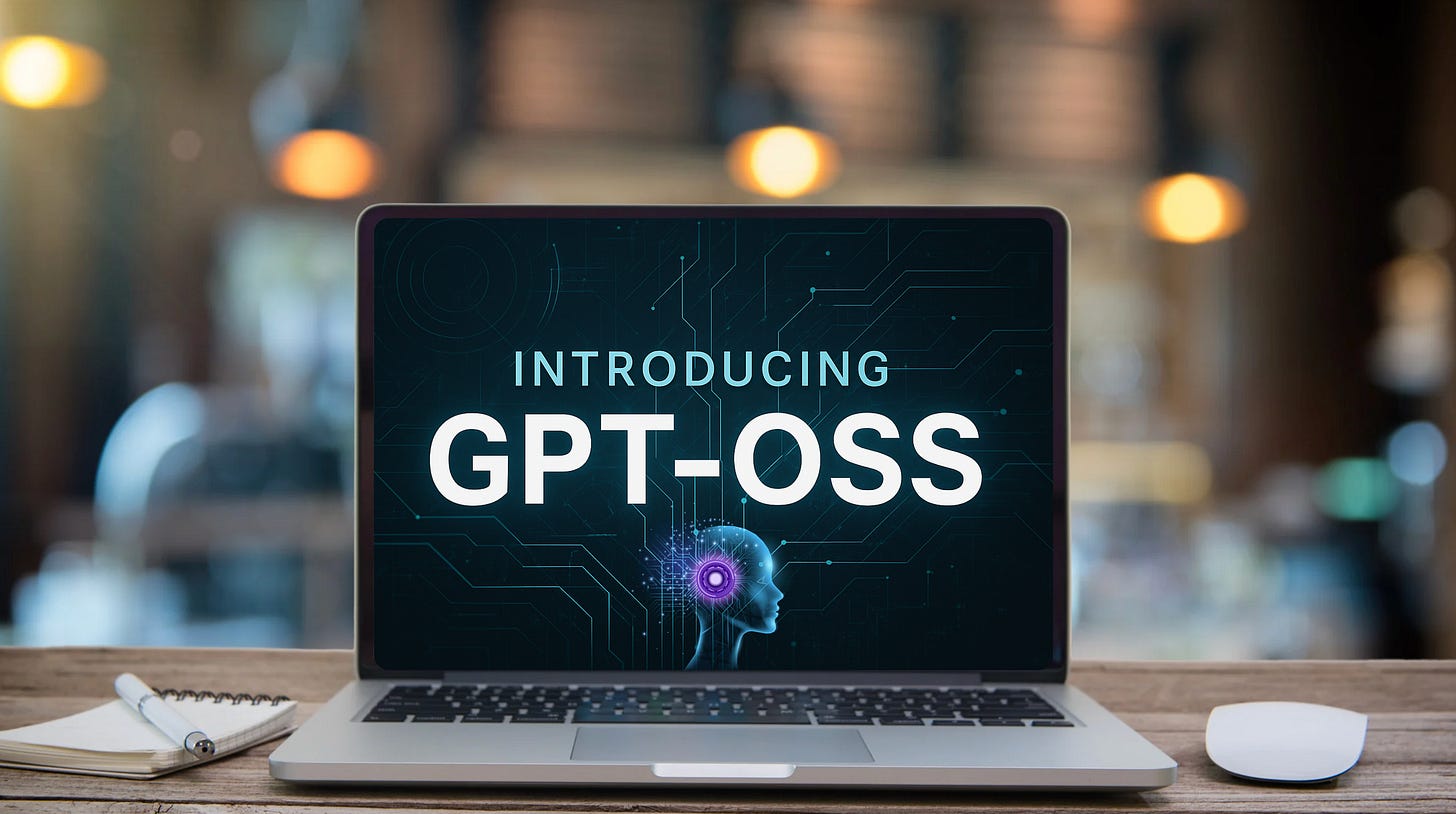OpenAI open-sourced GPT-level models that run on your laptop - here's why this changes everything
Why OpenAI's surprise open-source bombshell is the biggest plot twist since ChatGPT launched, what you need to know
1. The headline
This week OpenAI put two new language models, gpt-oss-20b and gpt-oss-120b, on the internet for anyone to download. They come under Apache 2.0 licence, which basically says: “Use them however you like, even to make money.”
The smaller model can run on a beefy laptop; the bigger one needs just one modern data-centre GPU. Within a day, AWS had them live in Amazon Bedrock.
Why does that matter? Because until now, OpenAI kept its best tech behind a rented-API paywall. By handing out the actual model files (“weights”), they’ve broken their own rulebook and invited every developer, and every business, to host the LLMs themselves.
2. What this reveals about the industry?
This opens up multi-cloud patterns - if you can handle the complexity
Because you can spin up GPT‑OSS on AWS, Azure, Google Cloud, or even an on‑prem box, the same agent code can move wherever cost, data‑residency or latency looks best. It’s no longer about hunting for one “AI cloud.” This is great for cloud providers, as the competition is on the engineering fundamentals - latency, cost, security, scalibility.Base models are becoming commodities.
Three years ago the model was the product. Today the performance gap between top open models and mid-tier proprietary ones is getting small. The moats are shifting to data, user experience and safety layers, not the model .Regulators like transparency.
Rules such as the EU AI Act reward companies that can show exactly how their AI works and where the data came from. Open weights make that paperwork much easier than a black-box API.Agents shift from online to offline
These models ship with the same JSON “tool-calling” as GPT-4. That means an AI assistant on your laptop can plan tasks, call APIs and summarise documents without touching the internet.
3. Lessons that matter
Treat models like Lego bricks, not crown jewels.
Architect your projects so you can swap GPT-OSS for Meta’s next Llama, or vice versa, without rewriting code. Flexibility is about future-proofing. Architect solutions that can evolve and consider the technical complexities involved in model switching (different APIs, prompt formats, etc.)Invest where your competitors can’t copy-paste.
Everyone can download the same model, but only you have your customer data, maintenance logs or niche industry knowledge. Focus on turning that data into value.Design for choice- multi-cloud and on-prem.
If AWS is cheaper this quarter, you should be able to switch with a checkbox, not a six-month migration plan. Open weights make that realistic.Bake compliance into the release process.
Keep audit logs, test results and red-team findings in your CI/CD pipeline from day one. Future you (and your legal team) will be grateful. Invest in observability and evalution. Keep things as transparent as you can.Edge AI is finally practical.
A 20-billion-parameter model running on a laptop means BIG. Factory-floor laptops, remote research stations, worker devices, and even smart appliances can get powerful language smarts without shipping data off-site.
4. Bottom line
OpenAI’s GPT-OSS isn’t just another model release. It’s a signal that high-quality AI is turning into common infrastructure - available to anyone, on any hardware, at any cloud. The winners will be the teams who treat that infrastructure as a starting point and race to add the data, design and trust layers that truly set them apart.
Dive deep: https://openai.com/index/introducing-gpt-oss/
Thanks,
Sandipan.
AgentBuild Community.
👉 Join AgentBuild Circles.


